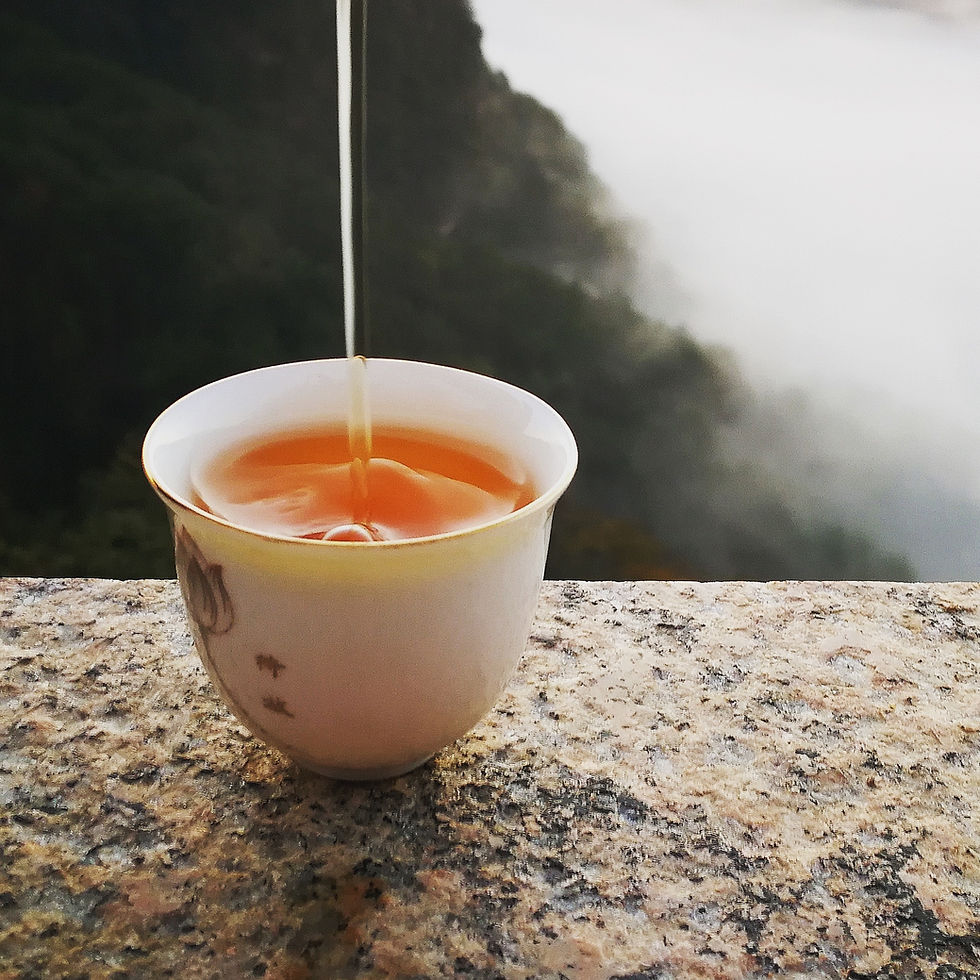A few days ago, I had some tea with a couple friends. One of my friends, let’s call him H, said that he’s always a little afraid of hot tea because he’s worried of getting burned. My other friends laughed, and said: “if you don’t drink hot tea, you’ll complete miss a tea. A tea is only worth drinking in the first few minutes. After that, it’s nothing but flavored water.”
H looked at me in disappointment, and asked: “Is this true? I can’t believe I’ve been wasting some many good teas.”
Actually, H doesn’t need to be upset at all. It’s true that most teas must be infused with boiling-temperature water at 100℃/212℉. Nonetheless, it doesn’t mean that we have to drink a tea at that temperature.
In fact, after the infusion, the temperature of your tea is already significant lower. If you use a traditional tea set (Gaiwan and smaller china cups), the temperature will be even lower.
Sometimes, a cooler-temperature tea could provide a unique mouthfeel too. Today, let’s discuss why a good tea doesn’t have to be enjoyed at a higher temperature.
For a freshly infused cup of tea, the aromas are more important than the tastes. A cup of hot tea is better at presenting a tea’s aroma because the higher temperature helps accelerate the molecular movement. This is also why when tea leaves are heated/roasted, they can produce far-reaching fragrances. High-boiling-temperature fragrance substances can only be released with high-temperature water.
Drinking an extremely hot tea can potentially damage our oral mucosa and esophagus. A “super hot tea” (temperature>85℃/185℉) also tastes a little astringent. If a tea drinker doesn’t know this detail, he/she might think that something is wrong with the tea.
The acceptable tea soup temperature is between 50℃/122℉ to 60℃/140℉. This range is considerably lower than what is defined as “hot”. At this temperature range, a tea tastes thicker, fresher and sweeter.
With water temperature dropping, rich nutrient substances start to “aggregate”. Substances such as tea polyphenols, multiple oxides (theaflavin, thearubigins), and caffeine would form complex compounds.
Black tea’s famous “opacity when cold/冷后浑” is the direct result of these compounds. In some teas with high catechin content, such as Wuyi oolong, they would have a thicker, slightly “congee-like” tea soup.
Besides the mouthfeel difference, a slightly cooler tea also has different aromas. Once low-boiling-temperature fragrances take over, we’d get more cold floral aromas.
Tea at different temperature shows different characteristics. Based on most tea drinkers’ preferences, the optimum tea soup temperature is between room temperature to 70℃/158℉. A temperature that is too hot or too cold would ultimately affect a tea’s performance.
We hope you enjoyed today’s blog. As always, if you have questions or suggestions, please leave a comment, tweet us @valleybrooktea or email the author directly at zhang@valleybrooktea.com. Please also follow us on Instagram @valleybrooktea and join our mail list to get our daily tea updates and our latest promotions!
This is a Valley Brook Tea original blog. All rights reserved.




Kaiser OTC benefits provide members with discounts on over-the-counter medications, vitamins, and health essentials, promoting better health management and cost-effective wellness solutions.
Obituaries near me help you find recent death notices, providing information about funeral services, memorials, and tributes for loved ones in your area.
is traveluro legit? Many users have had mixed experiences with the platform, so it's important to read reviews and verify deals before booking.